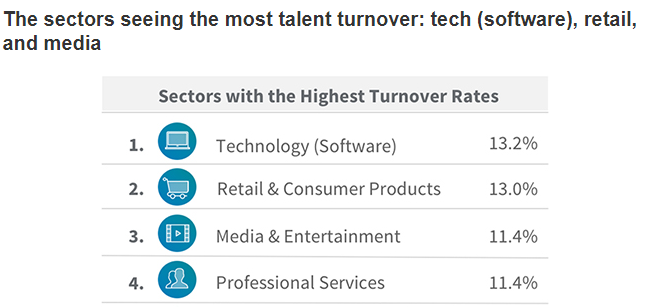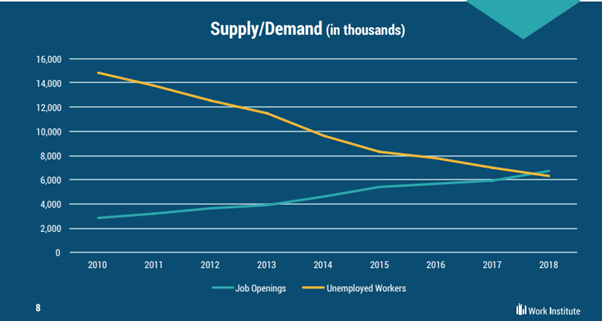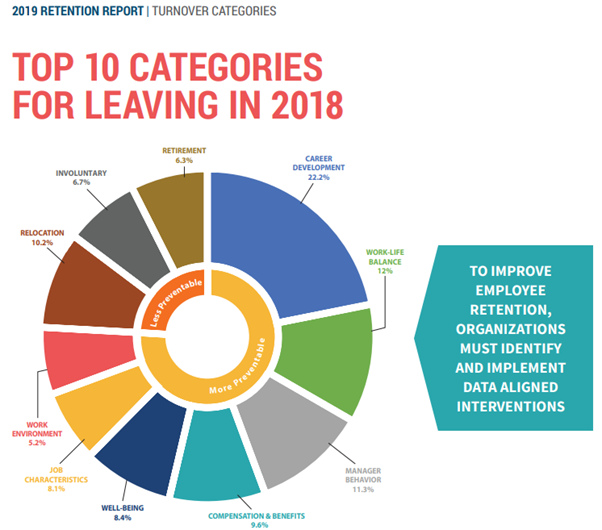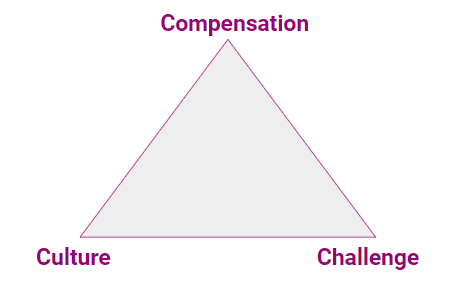
According to a Linkedin report, companies in the tech sector experience, on average, a 13,2% turnover rate. This is especially fueled by the increase of demand for Talent which originates a bidding war between companies for the best professionals. In this context, companies must evaluate their Strategies for Employee Retention if they wish to keep know-how and Talent in house while lowering their costs.

Source: LinkedIn
In this article, I will guide you through the reason people are changing companies like never before, how important it is for you to retain Talent, and how you can improve Employee Retention in your organization.
Why are people leaving their organizations?
Gone are the days where an employer could post a job online, sit back, relax and see a steady stream of high-quality applications come in automatically. Now it’s the other way around. Talent is in control as the current demand for tech professionals outgrows the supply of available talent. That’s why, according to the Work Institute, since 2010 the number of tech job openings has more than doubled.

Source: Work Institute
A shortage of qualified tech professionals and a surge in available, high-paying job vacancies has created the perfect storm. Also, a top reason employees jump ship is due to the lack of opportunities for career development as reported by the Work Institute. Work-life balance and manager behavior are also in the top 3. But don’t forget we must understand the differences between voluntary and involuntary turnover. We can’t forget there’s a healthy turnover: if you have a performance-oriented culture, then it’s very acceptable if you let go at least 10% of your least productive performers. The key takeaway is that 75% of the reasons in the graph below are actually very preventable if we are willing to take action.

Source: 2019 Retention Report — Turnover Categories
Why should you be concerned with retaining Talent?
Retaining Talent is set to be a top priority for 2020. Why?
- It helps you save tons of time and money. According to our data, the cost per hire alone in Europe is on average ~€25K, considering direct and indirect costs.
- The overall productivity of the workplace tends to decrease with high turnover. Since a new employee has a period of adjustment, he won’t complete tasks as quickly as the person he replaced.
How can you foster Employee Retention in your organization?
I will help you develop a strategy focused on three pillars: Compensation, Culture & Challenge. For each one, I’ll recommend three actionable advice that we implement at Landing.jobs to improve retention and that you can implement in your company to move the needle, ie. avoiding turnover.

Source: Landing.jobs
Compensation:
- Benchmark and don’t overpay. Try to make your research and understand what the market is paying, that’s your baseline. Offering higher pay can help you get candidates, but beware of the drive of the people you are attracting. Suddenly, one of your competitors will be able to offer a slightly higher salary and when it happens, it’s very likely you’ll lose your money-driven top talent or enter a bidding war.
- Reward your top performers with a fair evaluation model. Distinguish your top performers by rewarding them accordingly. Define very precise metrics, combining quantitative (ex: how long do users spend on a feature) and qualitative KPIs (360º feedback) which can give you a hint on how well someone is doing their job.
- Go far beyond cash. Perks are a fantastic way for you to differentiate yourself. However, most of the companies are offering the same benefits, which makes those policies very neutral. At Landing.jobs we have conducted research earlier this year with a pool of 3.000+ tech professionals and concluded that the two most impactful benefits are training and development and also letting your employees participating in the choices of technologies and tools.
Culture:
- Define a Tour of Duty. Customise a course of action for each one of your employees and give them regular feedback along the way. Your people must have a path and a purpose. If they don’t see the light at the end of the tunnel they will say they are not learning enough and therefore, they demotivate. The Tour of Duty (read more about it here) is perfect to set expectations and bring clarity to both managers and employees.
- Incentivise your employees to learn and share their experiences. The days where organisations were too vertical and hierarchical are gone. Now, with more flat organisations every single one has the right to learn and teach. Why don’t you create a weekly training plan where anyone from the team can go on stage and instruct others about their expertise? Learning doesn’t need to be a lonely process.
- Recognise achievements, not only the big ones. Most organisations tend to celebrate only when they close a millionaire deal or raise loads of funds. What about the product team? Sometimes a feature is shipped and it will change the course of the firm and still is not considered an achievement? At Landing, we have a bell right at the heart of our Lisbon office where people jump every day to ring it and share their achievements with the rest of the team. Then, those winnings are documented on a Slack channel.
Challenge:
- Let people feel the impact of their work and empower them. No one will be fully ready for a new and unexpected task. But the best way is to let them leave their comfort zone. Like an ordinary kid trying to ride a bike, people will fall, stand up and learn by doing. It might require a mindset shift, but trusting your team is pure gold.
- Get the right leaders on the front door. Empower the ones who can lead by example and who can inspire your team at their best. The right leaders will induce your team to go beyond the wall and think outside the box, while the wrong managers will sooner or later make your top talent jump ship. If you have an overall poor leadership, then train your people accordingly.
- Allow people to use their skills to the full extent. Use the 60–20–20 rule. Some of your employees will want to explore innovative projects. The challenge is that typically they are not a priority to the company’s roadmap. At Landing, the team allocates:
- 60% of their time to daily business, which is the core of their job;
- 20% for side projects that have an impact on tasks aligned with their top responsibilities, like improving processes;
- 20% wherever. This is where the magic happens, where people can be extremely imaginative or simply allocate time to learning and development. This last block is where creative collaborators develop very unusual but impactful initiatives that unexpectedly change the course of the company.
Now it’s on you. It’s time for you to evaluate your Employee Retention strategy and decide what, where and when to implement Compensation, Culture & Challenge in your company.
If you are ready to start growing your Product and Engineering teams, send me an email to [email protected]. To know more about the work we have been developing at Landing, follow us on LinkedIn.
Diogo Alves de Oliveira
Head of Business Development at Landing.jobs
Linkedin | Email






0 Comments